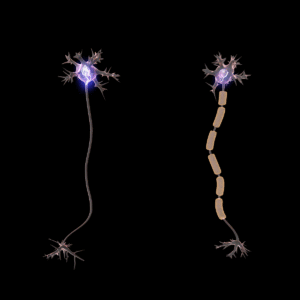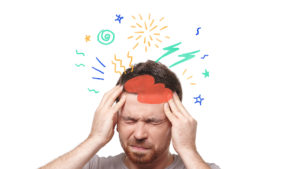Everyone knows the value of exercise. Whether your exercise journey is for the reason of weight loss or for better health, there is a common concern of not knowing when you should push through or ignore what you are feeling. As we have helped many to stay active or exercise safely, we have seen many injuries due to exercising. The early signs and symptoms tend to be ignored since it does not appear to be serious. Many cross their fingers with the hopes that exercise will take care of the concerns.
As we look back at the 1000’s of people we have helped, we are narrowing down to the TOP 5 signs we wish everyone knew while they exercise.
We added 3 common concerns that should go away after 4-6 weeks of consistent exercise. The latter situation is important to add. Many people exercise through these listed symptoms without realizing that they could have a better experience. The saying of “working smarter and not harder” fits into this scenario. We feel like it is appropriate to add these 3 common concerns.
-
Numbness and tingling:
 Let’s break down the difference between the two and why you should be a concern. Our philosophy as Long Beach’s premiere Orthopedic and Sports Medicine clinic is that your body has it’s own intelligence and ability to protect itself from you. Your muscles and joints are low on the totem pole in your ability to survive. Your nervous system and visceral organs are vital for you to live. Both your nerves, brain, digestive organs, heart, lungs, and such require circulation to stay healthy.
Let’s break down the difference between the two and why you should be a concern. Our philosophy as Long Beach’s premiere Orthopedic and Sports Medicine clinic is that your body has it’s own intelligence and ability to protect itself from you. Your muscles and joints are low on the totem pole in your ability to survive. Your nervous system and visceral organs are vital for you to live. Both your nerves, brain, digestive organs, heart, lungs, and such require circulation to stay healthy.
Numbness is a lack of blood supply to your nerves. It is that simple. If you are exercising and your hands go numb, then the exercise is slowing or stopping your blood to your important muscles. Your muscles cannot contract and move well. The risk will be muscle and tendon microtears or rupture. The prognosis of healing is dependent on blood supply. This factor is why diabetics are more likely to not recover as fast after an injury.
Tingling is the state of your nerves being irritated. The good news about this is that if you find the root cause of the tingling, the symptom should go away very soon. Irritation is different from severity. Irritation is different from severity. We intentionally wrote that saying twice because it is an important statement. You can have a highly irritated muscle injury that is small in severity. You can have a less irritated muscle injury but have a big tear.
It is common to see us to realize you have a big tear but have no pain. There are very few instances where surgeons would want to “fix” the tear even when you have no pain and can still do everything you wish for. We would like to point out that this is a high risk and low reward situation.
If you just got hurt the chemical reaction or the “clean-up crew” to help address the injury to resolve. The chemical reaction can cause tremendous pain but this is necessary to slow you down to rest momentarily.
-
Headaches
 There are numerous reasons for headaches. The two biggest categories that will result in headaches are mechanical and chemical. Mechanical means that a structural component is limiting the kinetic energy of your upper body to work well. This may lead to increased pressure with the worst case scenario as having a dangerously high blood pressure scenario. We have detected more than we would have liked and hence having a headache when or during your exercise can be dangerous.
There are numerous reasons for headaches. The two biggest categories that will result in headaches are mechanical and chemical. Mechanical means that a structural component is limiting the kinetic energy of your upper body to work well. This may lead to increased pressure with the worst case scenario as having a dangerously high blood pressure scenario. We have detected more than we would have liked and hence having a headache when or during your exercise can be dangerous.
Do us a favor and ALWAYS check your blood pressure if you have a headache.
In regards to the chemical source, it is common to have a headache due to medication side effects, heavy metals, hormonal imbalances, environmental toxins, and much more. Based on our philosophy of your body knowing best on how to protect you, these are all important factors that can slow your ability to survive by impacting your visceral organs.
-
Pain that follows a line
When you exercise and you have a feeling of pain that runs in the direction of a line. After seeing and helping many muscle and joint-type injuries, we have come to the conclusion that this feeling tends to be a reason of a nerve that is not moving well. Nerves need to stretch and glide along its anatomical pathway. Unfortunately, there are many creeks and crevices that can slow the nerve from moving well. If you ignore this, you might be dealing with the first factor of numbness and tingling. The hard part is that no one can predict if this progression will happen in a day, week, months or 5-15 years later.
If you slow down your exercise and you feel this line of pain during the stretch phase of the exercise, you might be dealing with a nerve stretch issue.
Based on the world renown Sports Medicine surgeon, Dr James Andrews, and the associated all-star Physical Therapist, Dr Kevin Wilk, we were taught that a line of tension around the shoulder region is indicative of rotator cuff muscle dysfunction.
-
Calf tightness or pain
 Calf pain can be a minor or dangerous symptom. For those who are not aware, calf pain can be an indicator of a Deep Vein Thrombosis (DVT). A DVT is a blood clot that can migrate to your lungs and cause a Pulmonary Embolism (PE). You can be in the Emergency Room.
Calf pain can be a minor or dangerous symptom. For those who are not aware, calf pain can be an indicator of a Deep Vein Thrombosis (DVT). A DVT is a blood clot that can migrate to your lungs and cause a Pulmonary Embolism (PE). You can be in the Emergency Room.
A moderate reason for calf pain or tightness is that many people who tear their Achilles Tendon complain of lingering calf tightness. The unfortunate news is that they also report how they ignore this simple symptom.
Lastly, a common reason for people to come to us is the lack of being able to run or workout due to calf tightness. When we investigate and put our Holistic hat on, we commonly find that the reason is due to a lower back or sciatica nerve issue. The tricky part about this situation is that you may have NO lower back pain or issues. If you go back to our article and the calf pain is in the form of a “pulling” or “tension” line, then assume nerve first. This is a common situation that fools much newer or unseasoned Physical Therapist or missed when you are being hustled within a busy clinic that cannot be comprehensive.
-
Recurrent hip or neck kinks or desire to “pop” shortly or a day afterward.
If you go back to our Neck article series, we highlight how we view the neck as a huge compensatory region. Our neck muscles are the end of the kinetic movement chain and design to fine-tune movements or drive movements. The common situation is that if you are feeling neck tension or the need to pop your neck, this is an indicator that there is a weak link in your movement chain and your neck is taking up this pressure.
A common reason for recurrent discomfort or tension after or during exercise is from a lack of single leg balance. Try it and see if you are in this hidden reason group or not. Place your tablet, phone, or step away from your desk and stand on one leg. A GOOD passing score is the ability to stand without effort for 30 seconds. There should be no head movements, hand gripping, compensation, jaw clenching, and/or feet tension.
Now imagine a skyscraper trying to be stable in the midst of an earthquake. What you will notice is that the bottom floors will be the most stable and the top floors will be the floor with the most motion. Yes, you don’t realize your neck is moving and swaying like a bobblehead. Your neck muscles are massively tensing up to keep your eyes and head level for motion. When muscles are tensed without sufficient full relaxation, this pressure builds up into a feeling of needing to “pop”. Imagine a soda can with pressure. The pop or fizz you get when you open up the soda pop is similar to gas being released when a joint produces a pop.
In summary, if every muscles and joint are doing what they are supposed to be doing, there will be no leakage within the kinetic chain. You will not feel neck tension, kinks, or desire to pop your neck.
3 signs and symptoms that indicate you could be getting more out of your work-out
There is a saying that we preach. You need stability, or the ability to control your strength before your body gives you strength. Your brain decides what and how to move. If you are after strength and mobility, you may be getting the same result. This is one reason why many people can harness about 40% of your muscle fibers. A desperate mother attempting to save their baby can produce ungodly strength or power when the brain-body connection agrees that you need it.
If you feel one or all three of these symptoms, assume your brain-body connection feels unsafe. The result is stiffening for your own good.
- Popping with movements
- A tight muscle that does not improve regardless of stretching daily for 4 weeks
- Cramping with movements
Allow us to explain.
- Popping with movements indicates that the joint-muscle interaction is weak. The muscles are not controlling the joint well and hence the popping and joint noises. Imagine a driver (muscle) driving sleepy and running over the lane bumps.
- A tight muscle that is not resolving with stretching indicates that the joint, ligaments, joint capsules, and such are vulnerable. A tight hamstring is a common reason for a weak sacroiliac joint and lumbar spine region. When a muscle becomes tight to stiffens up a joint, your joints will not be jarred as much. This is your body’s self-protection mechanism.
- A cramp with movements indicates that the communication between the nerves and muscles are not intact. The source of the cramp could be an electrolyte reason. Electrolytes help the nerve impulse to move alongside towards the muscle. As we have seen often, bananas and hydration is not always the solution. There are numerous reasons that impact this scenario within the nerve-muscle dynamics.
The good news is that the three factors are all changeable with a good safe training protocol using a brain-body solution-based system. As a quick summary, if addressing a flexibility or strength issue is not improving, there is a better alternative. You can begin to incorporate some joint-based or nerve-based strategies to help the muscle. If that does not change your situation, then we move into our holistic Visceral manipulation or Cranial Osteopathy methods to allow the body to process change better.
Your muscles want to be more mobile and strong. There is always something holding it back from your muscles helping you. Address it and you can stay active.
If you are interested in working with us and serious about staying active, reach out to us by clicking on the button below.
One LOVE,
Dr Danh Ngo
Board Certified Orthopedic and Sports Medicine Specialist
Doctor in Holistic Physical Therapy
Mind Body Health Results Coach
ReVITALize Rehab Club


